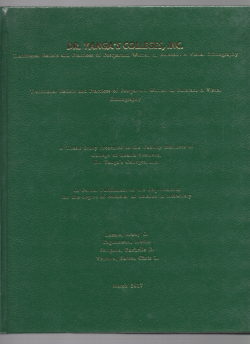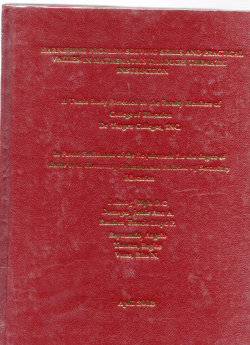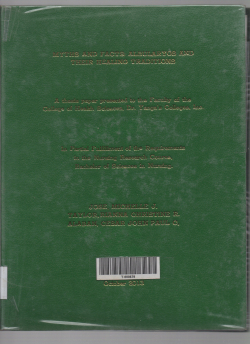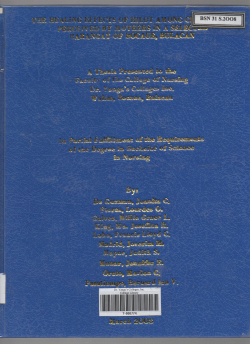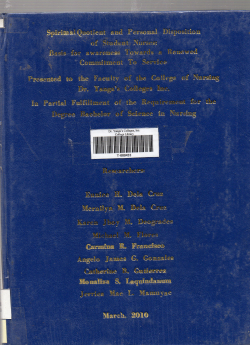An exploration of the healing practices of "Tawak" through visual ethnography
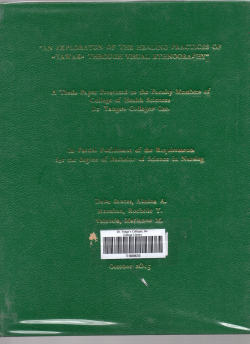
Type
Thesis
Authors
Category
CHS
[ Browse Items ]
Subject
tawak;healing practice
Abstract
About 70% of filipino seeks the services of traditional healers as against the 30% who go to a medical doctor. The collections of traditional healers are evident here in the Philippine setting. As a matter of fact albularyo, manhihilot, magtatawas, and "tawak" are common practitioners in the Filipino traditional health scene. "Tawak" specifically is a traditional remedy for venomous bites. It is believed to be effective as a preventive measure against such condition. It is ancient and based on the principle of bleeding out the body system of the toxin or poison. Thus, significantly, this research paper was conducted to further describe, explore and understand the healing traditions of tawak. The researchers made use of the visual ethnographic approach. This research design called for active inquiry through structured and unstructured interviews obtaining photos and video recordings and interviews to show how practices really are. furthermore, the researchers utilized purposive sampling wherein co-researchers were chosen based on the following criteria;(1) at least three years experience of treating clients and must be(2) Native of Bulacan performing tawak healing traditions in the rural areas of Batia,Pandi, and Pulilan. A one on one interview was conducted to four known "tawak"healers using video recorder. Data gathered were transcribed and analyzed to get information that would describe the traditional healer's perception, motivation and decription of healing practices. Subsequently,trustworthiness of this research paper was established using member checking . Co-researchers were able to verify the findings of the interpreted data. Co researchers described the know-how and how-to of each (sungay),coconut oil(langis), and the piper betle(ikmo) that are used in "tawak" healing process. The tradition is perform in a sequential process. First is the assessment of the bitten part in which "tawak"healer will palpate the area around in the wound to locate the extent of where the rabies had spread, followed by blade incision , where "tawak" will create passageway for the incision site. The third step is placing of the horn and sipping the blood, and after that is the coconut oil application and finally the placing of piper betle that will serve as seal to protect the wound for infection. Based on these findings, it is therefore concluded that client's who subjected themselves to "tawak" healing process have expressed satisfaction but the study does not provide guaranteed information about in effectivenedd. As a future nurse, these extent to the fact that providing proper treatment and cure should be applied to the provision of care.
Number of Copies
1
| Library | Accession No | Call No | Copy No | Edition | Location | Availability |
|---|---|---|---|---|---|---|
| Main | 633 | T D384e 2015 | 1 | Yes |
